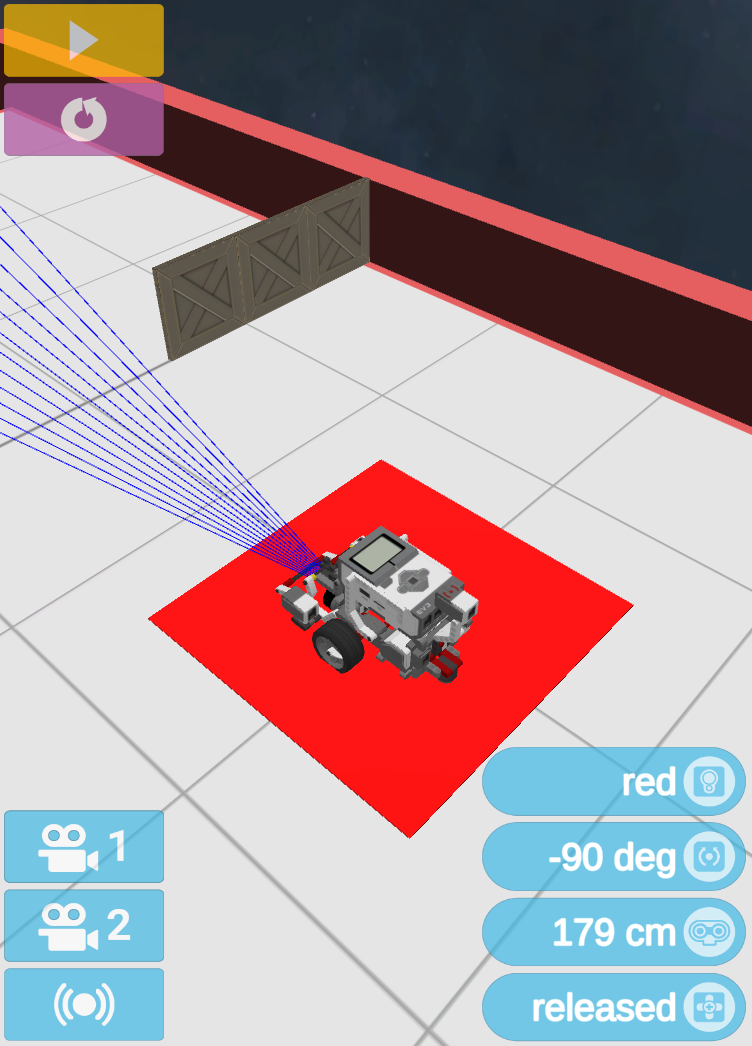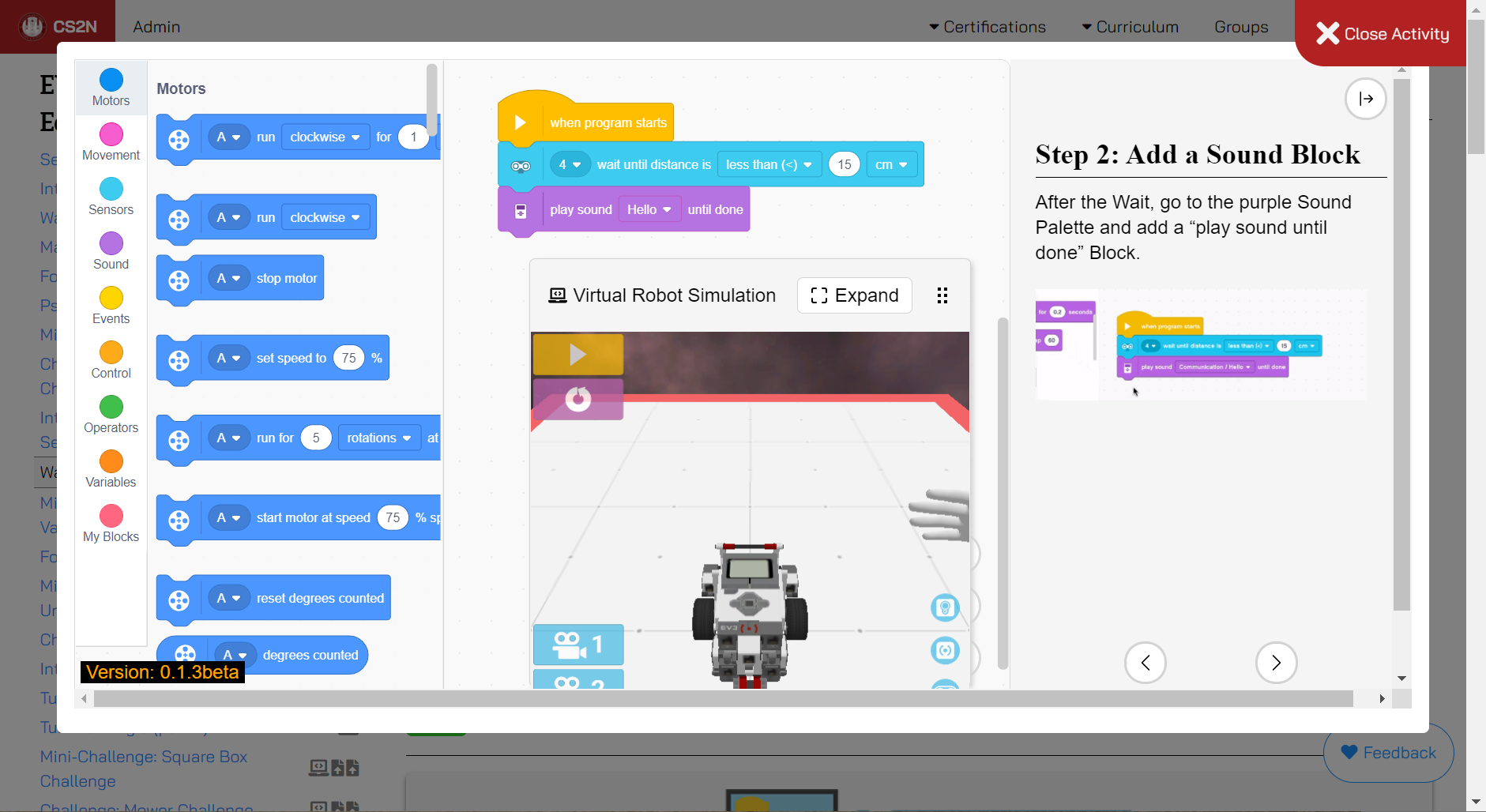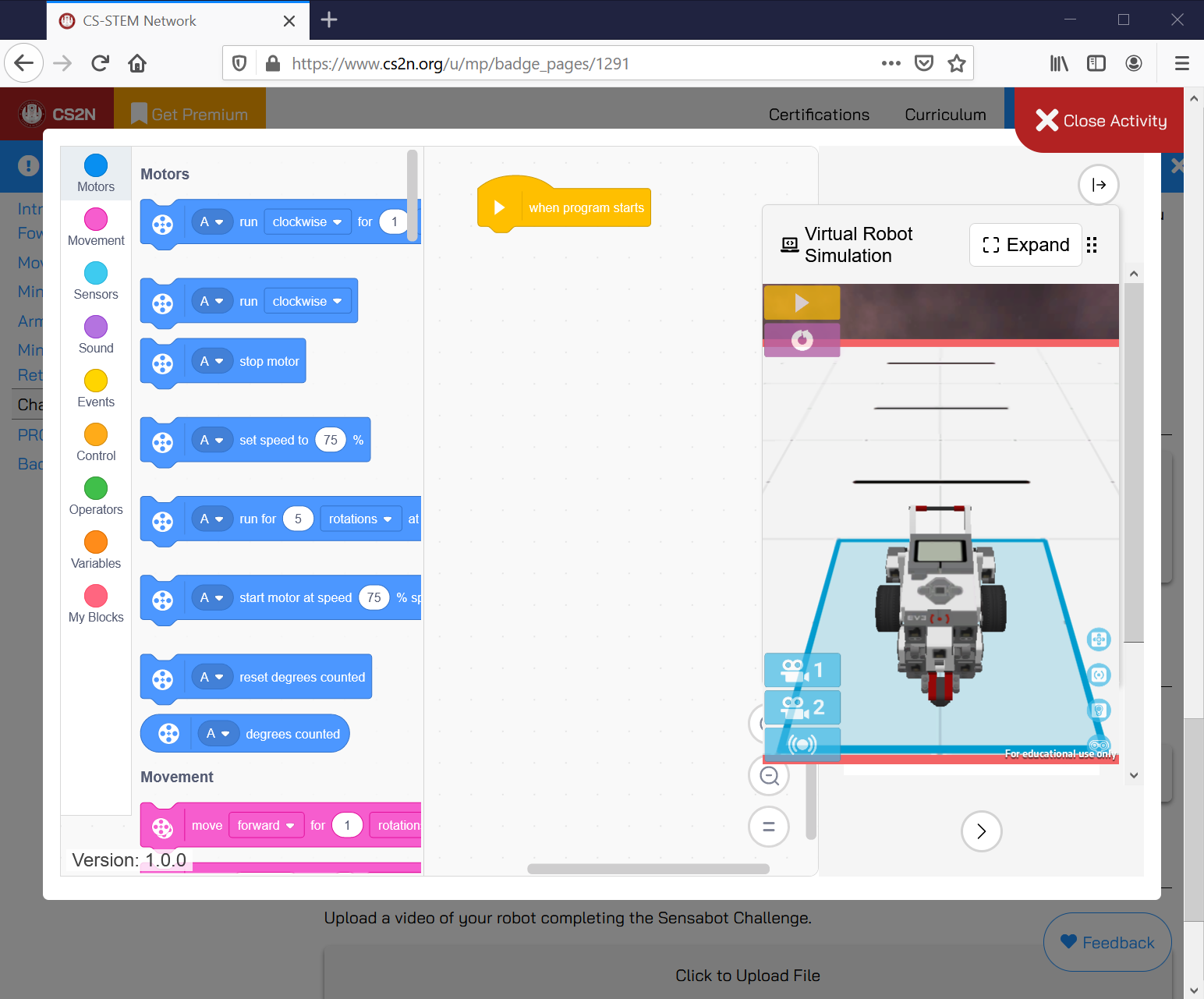Virtual Robotics Curriculum - a Complete Solution for Robotics Education
By Jesse Flot
In my role at the Carnegie Mellon Robotics Academy, I’ve been able to speak with dozens of robotics educators from around the world over the last year. Each educator had a few things in common. Most notably, they were deeply committed to their students, they had wildly new constraints and challenges thrust upon them, and they were concerned. Robotics classes everywhere were and are hurting due to the challenges of distance-based learning, limitations on shared classroom resources (ie robotics kits), asynchronous learning, incompatible home technology, reduced funding, competition cancellations, and the list goes on…
Educators, we hear you and we care about you and your students. Our team has been hard at work over the last several months to create a version of our curriculum which is fully enabled through an embedded virtual robot simulation and programming environment - no physical robotics kits or software installations are needed.
We’ve virtualized over 70 environments, so that students can follow along with every piece of direct instruction, every “Try It’ remix activity, every Mini-Challenge, and every End-of-Unit Challenge. The curriculum contains all of the material for both physical robots AND virtual robots, so educators that need to balance both (as is the case with many hybrid learning implementations) don’t need to also balance multiple curricula. For our first set of virtual activities, we’ve updated and enhanced our LEGO EV3 curriculum, with plans to support additional platforms in the future.

The virtual robot itself contains simulated versions of the programmable motors, sensors, and other components. A built-in sensor dashboard allows students and teachers to quickly inspect the values the robot sees, speeding up the process of developing and troubleshooting their code.

Those familiar with the Robotics Academy may remember that our team performed the original research and development around the popular Robot Virtual World simulation software. While that experience was valuable, our team took a radically different approach with our new virtual-enabled curriculum. Robot Virtual Worlds and other, similar solutions take what I refer to as the “Ikea” approach - the instructions are in one place, but the “real work” happens nearby, but separately. There’s no doubt that this approach enabled many students to reach meaningful learning outcomes in coding, computational thinking, and math - but it also enabled its fair share of classroom confusion with students attempting to find the correct spot across 3 separate pieces of software (curriculum, code, and simulation) before they could even get started.
Instead, our new virtual-enabled curriculum takes a just-in-time and embedded approach. As students make progress through the course (which the CS2N Learning Management System keeps track of), CS2N ensures sure that the student is presented with the corresponding instructions, virtual environment and programming interface. Better still, there is no file or submission management - CS2N automatically saves student code progress with each and every activity so that they never lose it and teachers never have to track it down.

Virtual activities can be run as many times as the student needs to foster their understanding, and their completion is automatically awarded so that students know when to move on. We are delighted to share a 100% free badge containing lesson content, virtual robot activities, and assessments to help you get started, here.
These materials are a portion of the materials from our full Robot Movement badge in the Introduction to Programming with Virtual LEGO EV3 Curriculum.
The full Introduction to Programming with Virtual LEGO EV3 is available now, and includes 5 Units: 1) Getting Started, 2) Robot Movement, 3) Robot Sensors, 4) Program Flow, & 5) Search and Rescue. We’ve kept the pricing of the full curriculum as inexpensive as possible, in order to continue to develop and support these tools while meeting the challenging constraints faced by schools. A single-license to the software is on sale for just $9 (from $12) and a bundle of 12 licenses is just $100 (from $130). Every license purchase includes the most up-to-date version of the virtual curriculum; you'll never need to to pay for an update.
Once they have a license, teachers and students can use the curriculum whether they’re at home, school, or anywhere else in the world. All they need is an Internet-connected Chromebook, Windows PC, or Mac. (The curriculum can also run in “desktop mode” of many mobile browsers, but keep in mind that the experience was optimized for devices with a minimum screen size and keyboard.)
As always, our work here isn’t done and we want to continue providing more. More options for users of other platforms, and more challenges to engage and excite kids. However,we’d also love your feedback. Whether you try out the full curriculum or the free badge, please share your thoughts. We want our work to make the world a better place, and are truly motivated by real-world feedback.
Finally, I’d like to thank the small and highly committed group of educators that helped us to test and refine this curriculum over the last few months. A big shout out to Deepti, Luke, and Amanda.

